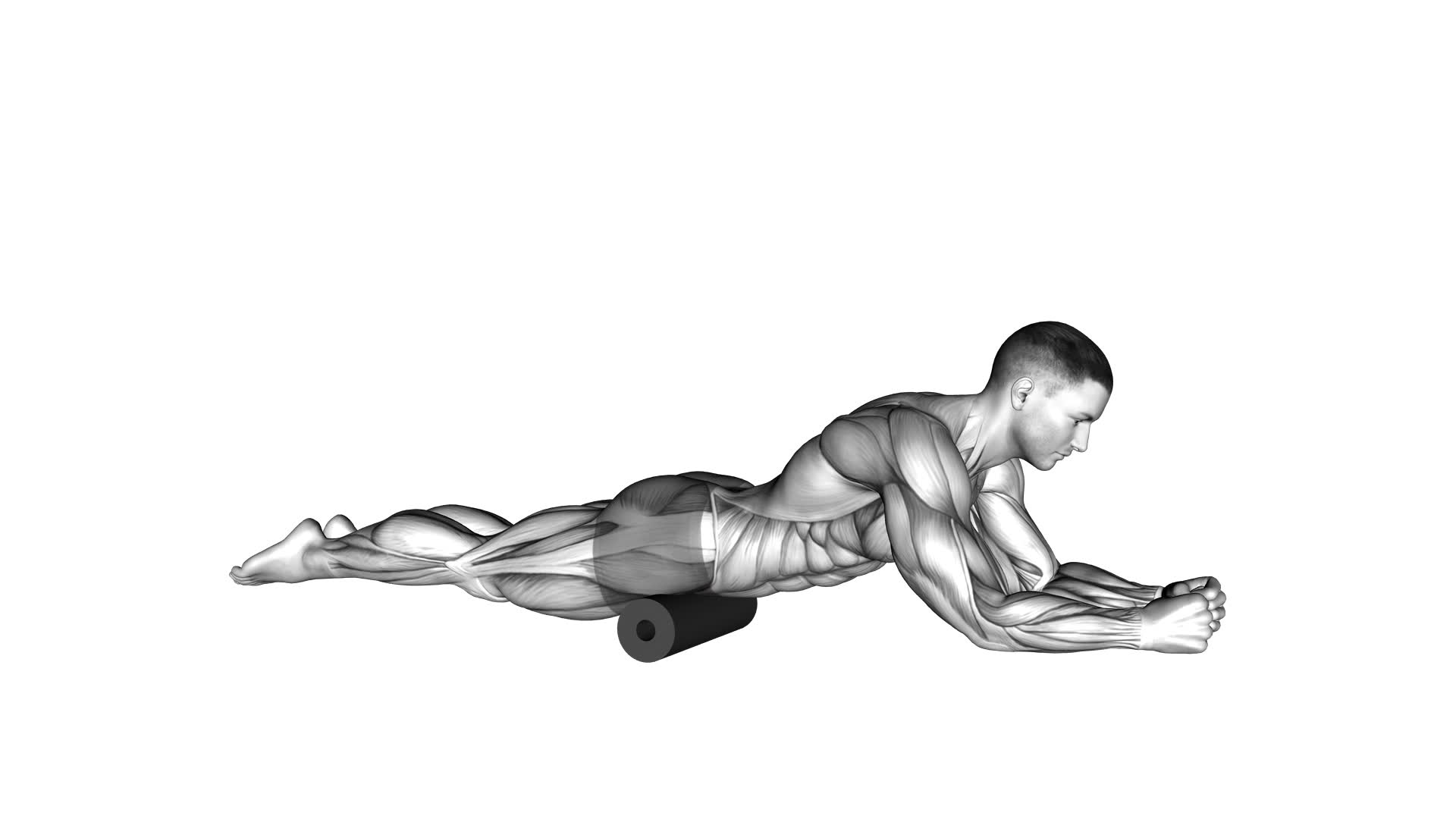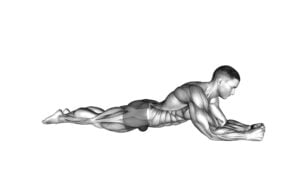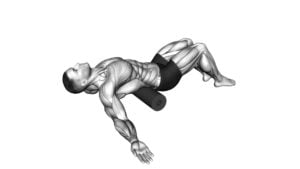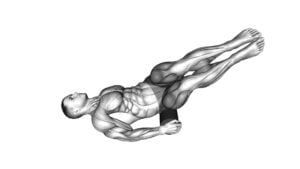Roll Iliospsoas – Video Exercise Guide & Tips

Get ready to strengthen and stretch your iliopsoas muscle with the Roll Iliospsoas exercise! In this video exercise guide, we'll show you step-by-step how to properly perform this movement for maximum benefit.
Watch This Exercise Video
Avoid common mistakes and learn helpful tips to get the most out of your workout. Plus, we'll suggest variations and progressions to keep challenging yourself.
Let's dive in and improve your core stability and hip flexibility with the Roll Iliospsoas!
Key Takeaways
- The roll iliopsoas exercise combines the iliacus and psoas major muscles, which are responsible for hip flexion and lower back stability.
- Stretching and strengthening the iliopsoas muscles can prevent muscle imbalances, improve flexibility, and alleviate lower back and hip pain.
- Engaging core muscles during the exercise enhances stability, balance, and overall athletic performance while reducing the risk of injuries.
- Variations and progressions of the roll iliopsoas exercise, such as the single leg roll, weighted roll, and side plank roll, can target different muscles and increase difficulty for a more comprehensive workout.
Importance of the Iliopsoas Muscle
Understand the importance of the iliopsoas muscle for your overall body function and mobility. The iliopsoas muscle is a key player in your body's movement and stability. It's a combination of two muscles, the iliacus and the psoas major, which work together to flex your hip joint and provide stability to your lower back. Stretching and strengthening exercises for the iliopsoas muscle are crucial for maintaining proper function and preventing injuries.
Stretching the iliopsoas muscle is important to maintain its flexibility and prevent muscle imbalances. Tightness in this muscle can lead to lower back pain, hip pain, and reduced mobility. Incorporating stretching exercises like lunges or the kneeling hip flexor stretch can help lengthen the iliopsoas muscle and improve its flexibility.
Strengthening exercises for the iliopsoas muscle are also essential for overall body function. A strong iliopsoas muscle provides stability to your lower back and pelvis, helping you maintain proper posture and preventing injuries. Exercises like leg raises or planks can target the iliopsoas muscle and help strengthen it.
Incorporating both stretching and strengthening exercises for the iliopsoas muscle into your fitness routine is crucial for maintaining proper function and mobility. Make sure to consult with a healthcare professional or a qualified trainer to ensure you're performing these exercises correctly and safely.
Preparing for the Roll Iliospsoas Exercise
Before you begin the Roll Iliospsoas exercise, it's important to understand the benefits it offers, the common mistakes to avoid, and the proper form and technique to follow.
This exercise helps to strengthen and stretch the iliopsoas muscle, which can improve hip flexibility and stability.
Benefits of the Exercise
To prepare for the Roll Iliospsoas exercise, you can experience numerous benefits. This exercise targets the iliopsoas muscle, which is responsible for hip flexion. By regularly performing the Roll Iliospsoas exercise, you can improve the flexibility and strength of your hip flexors. This can lead to increased range of motion in your hips, allowing for better performance in activities such as running, jumping, and squatting.
Additionally, strengthening the iliopsoas muscle can help alleviate lower back pain and improve posture. This exercise also engages the core muscles, providing stability and balance.
Moreover, by regularly incorporating the Roll Iliospsoas exercise into your workout routine, you can enhance your overall athletic performance and reduce the risk of hip and lower back injuries.
Common Mistakes to Avoid
To avoid common mistakes and properly prepare for the Roll Iliospsoas exercise, it's important that you maintain proper form and alignment throughout the movement. This will help prevent injuries and correct your posture.
One common mistake to avoid is arching your lower back excessively during the exercise. This can strain your back muscles and increase the risk of injury. Instead, focus on engaging your core and keeping your spine neutral.
Another mistake isn't fully extending your leg during the roll. Make sure to straighten your leg completely to get the full benefits of the exercise and avoid putting unnecessary strain on your hip flexors.
Proper Form and Technique
Maintaining proper form and technique is crucial for preparing for the Roll Iliospsoas exercise, as it helps prevent injuries and ensures optimal results. To maximize the benefits of this exercise, it's important to pay attention to your body positioning and movement.
Start by lying on your back with your knees bent and feet flat on the floor. Place the foam roller under your lower back, just above your pelvis. Engage your core and slowly roll the foam roller up towards your ribcage, focusing on the muscles in your lower back and hips. Keep your movements controlled and avoid arching your back or using momentum.
If the Roll Iliospsoas exercise feels too challenging, there are alternative exercises you can try, such as pelvic tilts or hip bridges, to strengthen the same muscle groups.
Step-by-Step Guide to Performing the Roll Iliospsoas
Now let's dive into the key points of performing the Roll Iliospsoas exercise.
First and foremost, it's crucial to focus on maintaining proper form throughout the movement to maximize its effectiveness.
Additionally, we'll discuss common mistakes that should be avoided to prevent injury and ensure optimal results.
Proper Form Techniques
Start by positioning yourself on a foam roller underneath your hip and upper thigh.
This exercise is great for maximizing flexibility and preventing injuries in the iliopsoas muscle.
Place your hands on the floor to support your upper body and lift your hips off the ground.
Roll slowly back and forth along the length of your thigh, from your hip to just above your knee.
As you roll, focus on any tight or sore spots and pause for a few seconds to apply pressure and release tension.
Remember to breathe deeply throughout the exercise to help relax the muscle.
By performing the Roll Iliospsoas with proper form, you can effectively stretch and strengthen this important muscle group.
Now, let's move on to the next section and learn about common mistakes to avoid.
Common Mistakes to Avoid
To avoid common mistakes while performing the Roll Iliospsoas, ensure proper form by positioning yourself on a foam roller underneath your hip and upper thigh. One common mistake is placing the roller too close to your knee, which can lead to excessive pressure on the joint. Instead, make sure the roller is positioned just below your hip bone.
Another mistake to avoid is rolling too fast or with too much force. This can cause discomfort or even injury. Instead, roll slowly and gently, focusing on relaxing the muscles and allowing the roller to sink into the tissue.
By following these proper form techniques, you can effectively target and release tension in the iliopsoas muscles.
Now let's explore the benefits of this exercise.
Benefits of This Exercise
To maximize the benefits of the Roll Iliospsoas exercise, focus on targeting and releasing tension in the iliopsoas muscles through slow and gentle rolling. This exercise can have several positive effects on your body and overall well-being. Here are some of the benefits you can expect:
- Increased flexibility: The Roll Iliospsoas exercise helps to lengthen and stretch the iliopsoas muscles, which can improve your range of motion and flexibility.
- Reduced lower back pain: By releasing tension in the iliopsoas muscles, this exercise can alleviate lower back pain caused by tightness in that area.
- Improved posture: The Roll Iliospsoas exercise targets the hip flexors, which are often tight in individuals with poor posture. By releasing tension in these muscles, you can achieve better alignment and posture.
- Enhanced athletic performance: Strong and flexible iliopsoas muscles can contribute to improved athletic performance, especially in activities that involve running, jumping, or kicking.
Now let's delve into the next section and discuss common mistakes to avoid during the Roll Iliospsoas exercise.
Common Mistakes to Avoid During the Roll Iliospsoas
Avoid the common mistakes that can hinder your progress during the Roll Iliospsoas exercise. Proper form is crucial to maximize the benefits of this exercise and prevent injury.
One common mistake to avoid is rushing through the movement. It's important to perform the exercise slowly and with control to engage the targeted muscles effectively.
Another common mistake isn't maintaining proper alignment. Ensure that your spine is neutral and your core is engaged throughout the movement. Avoid arching your back or allowing your hips to tilt to one side.
Additionally, it's important to avoid using momentum to perform the roll. Focus on using your abdominal muscles to initiate the movement rather than relying on swinging your legs.
Lastly, be cautious of overextending your range of motion. It's essential to listen to your body and avoid pushing beyond your limits, as this can lead to strain or injury.
Tips for Maximizing the Benefits of the Roll Iliospsoas
Maximize the benefits of the Roll Iliospsoas exercise by focusing on proper alignment and engaging your core throughout the movement. To ensure you get the most out of this exercise and prevent injury, here are some tips to keep in mind:
- Maintain a neutral spine: When performing the Roll Iliospsoas, it's crucial to keep your spine in a neutral position. Avoid arching your back or rounding your shoulders, as this can strain the muscles and lead to injury.
- Engage your core: Activating your core muscles not only helps to stabilize your body during the exercise but also maximizes flexibility in your iliopsoas muscles. Be sure to engage your abdominal muscles and draw your belly button towards your spine throughout the movement.
- Control the movement: Instead of rushing through the exercise, focus on controlling the movement. Slowly roll over the foam roller, pausing at any tender spots to release tension and promote flexibility. This controlled approach will allow you to target the iliopsoas muscles more effectively.
- Listen to your body: Pay attention to any discomfort or pain during the exercise. If you experience any sharp or intense pain, stop immediately and consult a healthcare professional. It's essential to prioritize your safety and well-being throughout your fitness journey.
By following these tips, you can maximize the benefits of the Roll Iliospsoas exercise, improve flexibility, and prevent injury.
Now, let's explore recommended variations and progressions for the roll iliospsoas.
Recommended Variations and Progressions for the Roll Iliospsoas
Explore different variations and progressions to enhance the effectiveness of your Roll Iliospsoas exercise. By incorporating recommended variations and progressions into your routine, you can target different muscles and challenge yourself in new ways.
One recommended variation is the Single Leg Roll Iliospsoas. Start by lying on your back with one knee bent and the other leg extended. Place the foam roller under your hip flexors and slowly roll back and forth, focusing on the tension in your iliopsoas muscle. This variation allows you to isolate and apply more pressure to one side at a time.
Another progression is the Weighted Roll Iliospsoas. Hold a dumbbell or kettlebell against your chest while performing the exercise. The added resistance will increase the difficulty and engagement of your iliopsoas muscles.
For a more advanced variation, try the Side Plank Roll Iliospsoas. Begin in a side plank position with your forearm on the ground and your body in a straight line. Place the foam roller under your hip and roll forward and backward, targeting the iliopsoas on the side that's facing up. This variation challenges your stability and core strength while also targeting the iliopsoas.
Incorporating these recommended variations and progressions into your Roll Iliospsoas exercise can help you continue to challenge your muscles and make progress in your fitness journey. Remember to always listen to your body and adjust the intensity as needed.
Frequently Asked Questions
Can the Roll Iliospsoas Exercise Be Modified for Individuals With Lower Back Pain?
If you have lower back pain, you may be wondering if the roll iliospsoas exercise can be modified for you. The answer is yes! There are modifications you can make to manage your lower back pain during this exercise.
It's important to listen to your body and stop if you feel any discomfort. You can try adjusting the intensity, range of motion, or using props for support.
Always consult with a healthcare professional before starting any new exercise routine.
How Often Should the Roll Iliospsoas Exercise Be Performed for Optimal Results?
For optimal results, you should perform the roll iliospsoas exercise on a regular basis. The frequency of this exercise can vary depending on your fitness level and goals. However, a general recommendation is to do it 2-3 times per week.
Each repetition should be done with controlled movements and held for about 10-15 seconds. Remember to listen to your body and adjust the intensity and duration as needed.
Consistency is key for seeing improvements in your iliopsoas muscles.
What Are Some Alternative Exercises That Can Target the Iliopsoas Muscle?
To target the iliopsoas muscle, there are several alternative exercises you can try. These exercises include lunges, leg lifts, and knee-to-chest stretches.
Incorporating these exercises into your workout routine can help strengthen and stretch the iliopsoas muscle, improving flexibility and reducing the risk of injury.
Stretching the iliopsoas muscle regularly can also help alleviate lower back pain and improve posture.
Are There Any Precautions or Contraindications for Performing the Roll Iliospsoas Exercise?
Before attempting the roll iliospsoas exercise, it's important to be aware of any precautions or contraindications. This exercise involves a deep stretch of the iliopsoas muscle, which can put strain on the lower back if not done correctly.
If you have any existing lower back issues or pain, it's best to consult with a healthcare professional before attempting this exercise. Additionally, there may be alternative exercises that can target the iliopsoas muscle without putting as much strain on the lower back.
How Long Should Each Repetition of the Roll Iliospsoas Exercise Be Held For?
When performing the roll iliospsoas exercise, it's important to know how long to hold each repetition. Holding the roll iliospsoas exercise for longer durations can provide additional benefits.
By extending the hold time, you can increase the stretch and strengthen the iliopsoas muscles more effectively. This can improve flexibility, stability, and overall hip function.
Conclusion
In conclusion, the Roll Iliospsoas exercise is a beneficial way to strengthen and stretch the iliopsoas muscle. By following the step-by-step guide and avoiding common mistakes, you can maximize the benefits of this exercise.
Additionally, incorporating variations and progressions can further challenge and enhance your workout. Remember to always prepare and warm up before attempting any exercise, and consult with a healthcare professional if you have any concerns or injuries.

Author
Years ago, the spark of my life’s passion ignited in my mind the moment I stepped into the local gym for the first time. The inaugural bead of perspiration, the initial endeavor, the very first surge of endorphins, and a sense of pride that washed over me post-workout marked the beginning of my deep-seated interest in strength sports, fitness, and sports nutrition. This very curiosity blossomed rapidly into a profound fascination, propelling me to earn a Master’s degree in Physical Education from the Academy of Physical Education in Krakow, followed by a Sports Manager diploma from the Jagiellonian University. My journey of growth led me to gain more specialized qualifications, such as being a certified personal trainer with a focus on sports dietetics, a lifeguard, and an instructor for wellness and corrective gymnastics. Theoretical knowledge paired seamlessly with practical experience, reinforcing my belief that the transformation of individuals under my guidance was also a reflection of my personal growth. This belief holds true even today. Each day, I strive to push the boundaries and explore new realms. These realms gently elevate me to greater heights. The unique combination of passion for my field and the continuous quest for growth fuels my drive to break new ground.







